As I watched spawning cutthroat trout in the clear water, a flash of fur caught my eye. Seconds later, an otter head popped up, with a large, flopping trout in its jaws. It swam with the trout to a log just a few yards away.
The otter tore into its prey, sending fish skin and blood flying. It smacked its lips loudly. Soon it was joined by others, equally adept at catching trout – and equally theatrical in eating them.
One of the great things about members of the weasel family is that they are seemingly always on the hunt. This means if you find them, you can often observe acts of predation.
Being called a weasel may carry negative connotations, but for a naturalist, the weasels constitute one of the coolest wildlife families roaming the planet. Doubt that? The mustelids, as the weasel family is taxonomically known, include creatures of legendary strength and toughness. Included in the family are such charismatic critters as badgers, otters, ferrets and martens.
They’re often active during the day, found in beautiful and wild places, and fun to observe. You can find native mustelids on five continents, and in many of the world’s most iconic parks and wildlife reserves.
Here, I feature 9 of the most epic members of the weasel family. Since observing these mammals is so fun, I’ve also included tips on where to see them.
It was tough to narrow down the list because all 58 (or so) mustelids are interesting. So apologies if I’ve left off your favorite ferret-badger or grison. Feel free to post your favorite sightings in the comments.
-
Wolverine
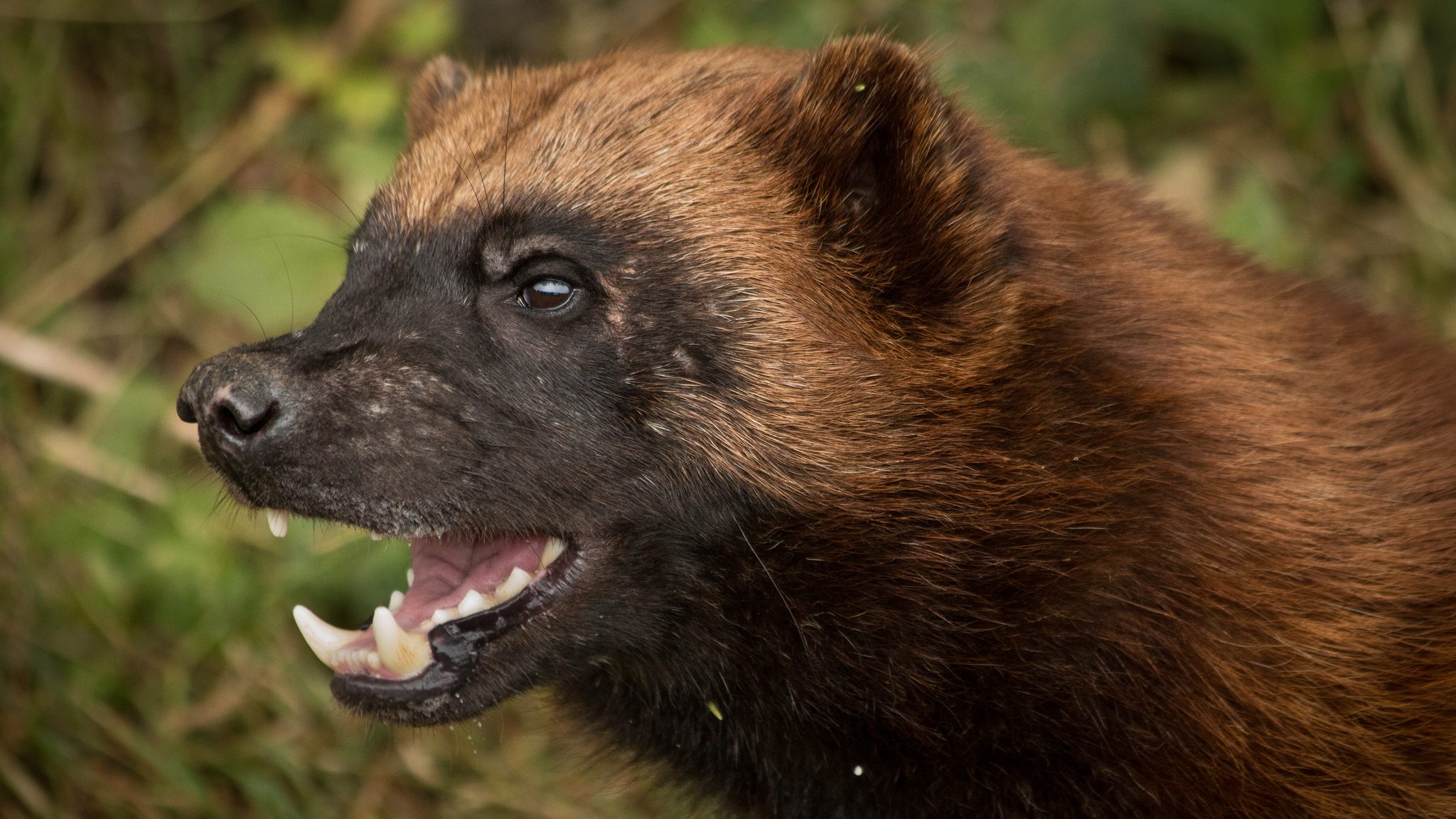
Wolverine © Barney Moss/Flickr under a creative commons license The wolverine is the subject of endless tall tales, but this largest of weasels needs no embellishment. Take its wide-ranging lifestyle. One well-documented individual traveled 1,000 miles from northwestern Wyoming to Colorado and then into North Dakota. At one point, such animals were considered exceptional, but it may just be that the wolverine needs to roam.
Wolverines were wiped out of the “lower 48” United States in the 1930s, but rovers from Canada recolonized wilderness areas. Wolverines likely never existed at high densities. They breed slowly. They thrive in high-elevation mountains even during the depths of winter. But increased human disturbance, including winter recreation, and climate change means they face an uncertain future.
Where to See: In Finland, wildlife blinds are set up over carcasses and offer the most reliable wolverine viewing. But for me, wolverines mean wilderness. If you’re the same, try trekking in the Sawtooth Mountains of Idaho, Glacier National Park in Montana, or the tundra of Alaska and Canada. I have friends who have been lucky, but they put in a lot of time in the backcountry. Which is its own reward.
-
Honey Badger
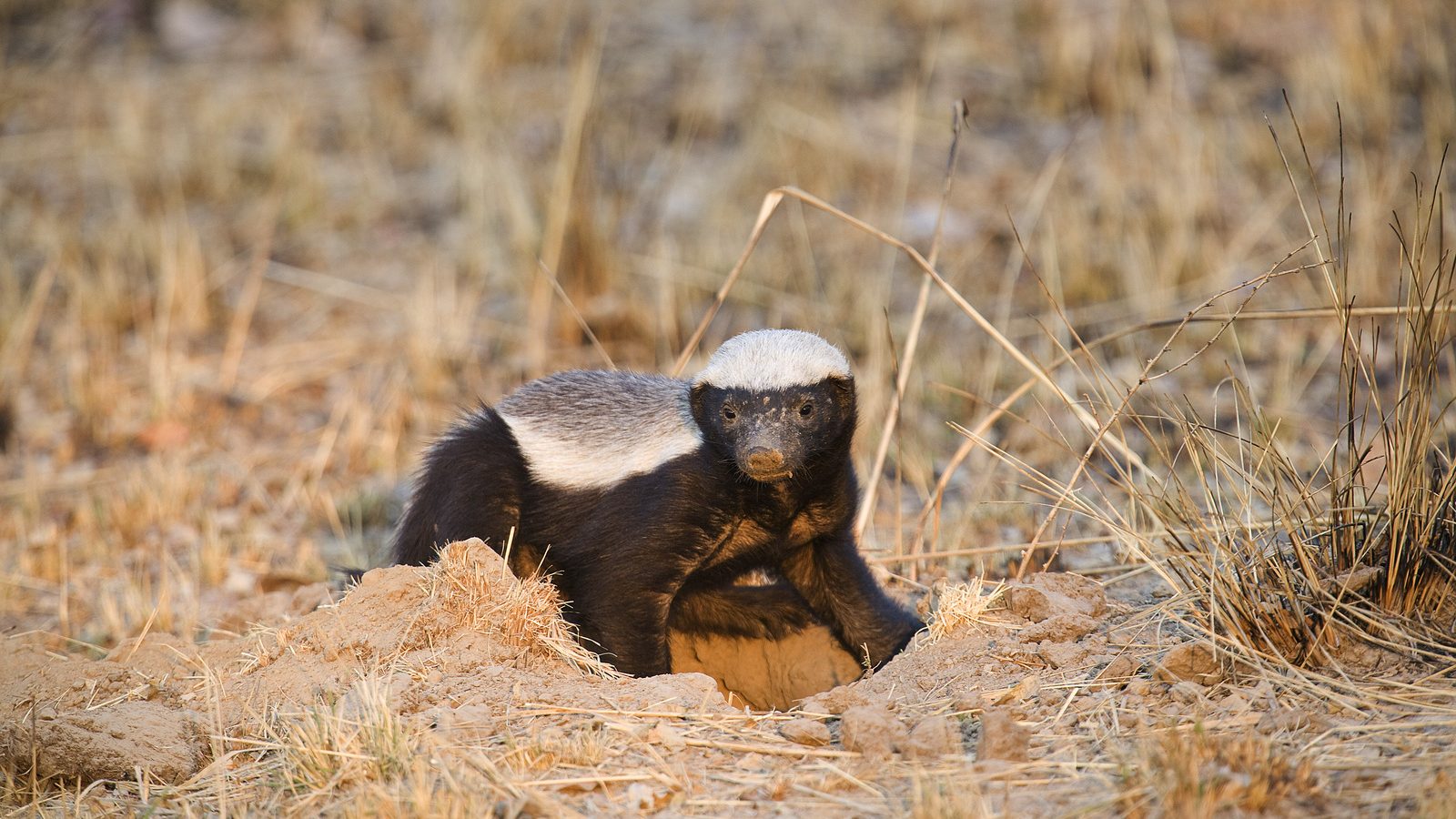
Honey badger (Mellivora capensis) at Lufupa Tented Camp in Kafue National Park. © Kenneth K. Coe Its 15 minutes of YouTube fame may have passed, but the honey badger still deserves legendary creature status. Consider the most famous nature documentary footage: the honey badger is bitten by a venomous snake, seemingly causing the badger to expire. Hours later, it wakes up – as if from a particularly bad hangover – and proceeds to finish off and eat the snake.
I’m sure you will agree that this is infinitely better than a song about baby sharks.
Where to See: Honey badgers are found in many of the great wildlife reserves of southern and eastern Africa, as well as India. Many wildlife viewers report them from the Kalahari and Kruger, where staking out campsites and garbage dumpsters can be an effective strategy. You should also never pass up the opportunity for a night safari, to see honey badgers and other elusive critters.
-
Hog Badger
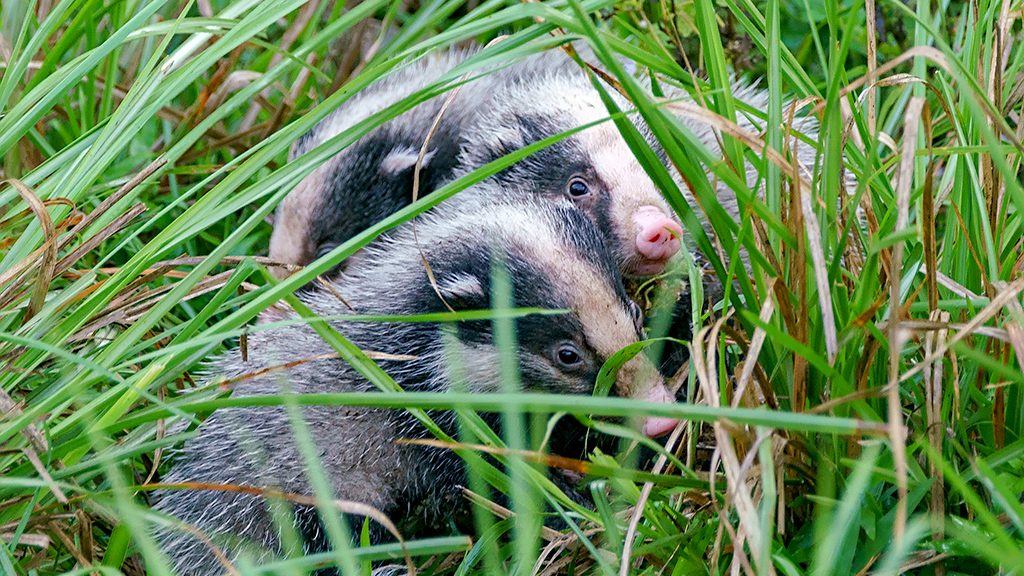
Hog Badger. Kaziranga National Park, Assam, India. David Cook/Flickr under a creative commons license The hog badger is one of those creatures that looks like it’s been assembled from spare parts: the snout of a pig (hence the name), the legs of a dog, the coloration of a skunk…all in a form that is unmistakably badger.
Like many members of the weasel family, hog badgers are neither well known or well studied. Unfortunately, they’re declining across their Southeast Asia range due to meat poaching.
Where to See: I had an excellent sighting of one in Kaziranga National Park in northeast India, and this seems to be one of the more reliable locales. This park is one of the world’s great wildlife areas, with Asian one-horned rhinos, Asian elephants and wild water buffaloes galore. But if you take your time, there are smaller rarities too.
-
Fisher
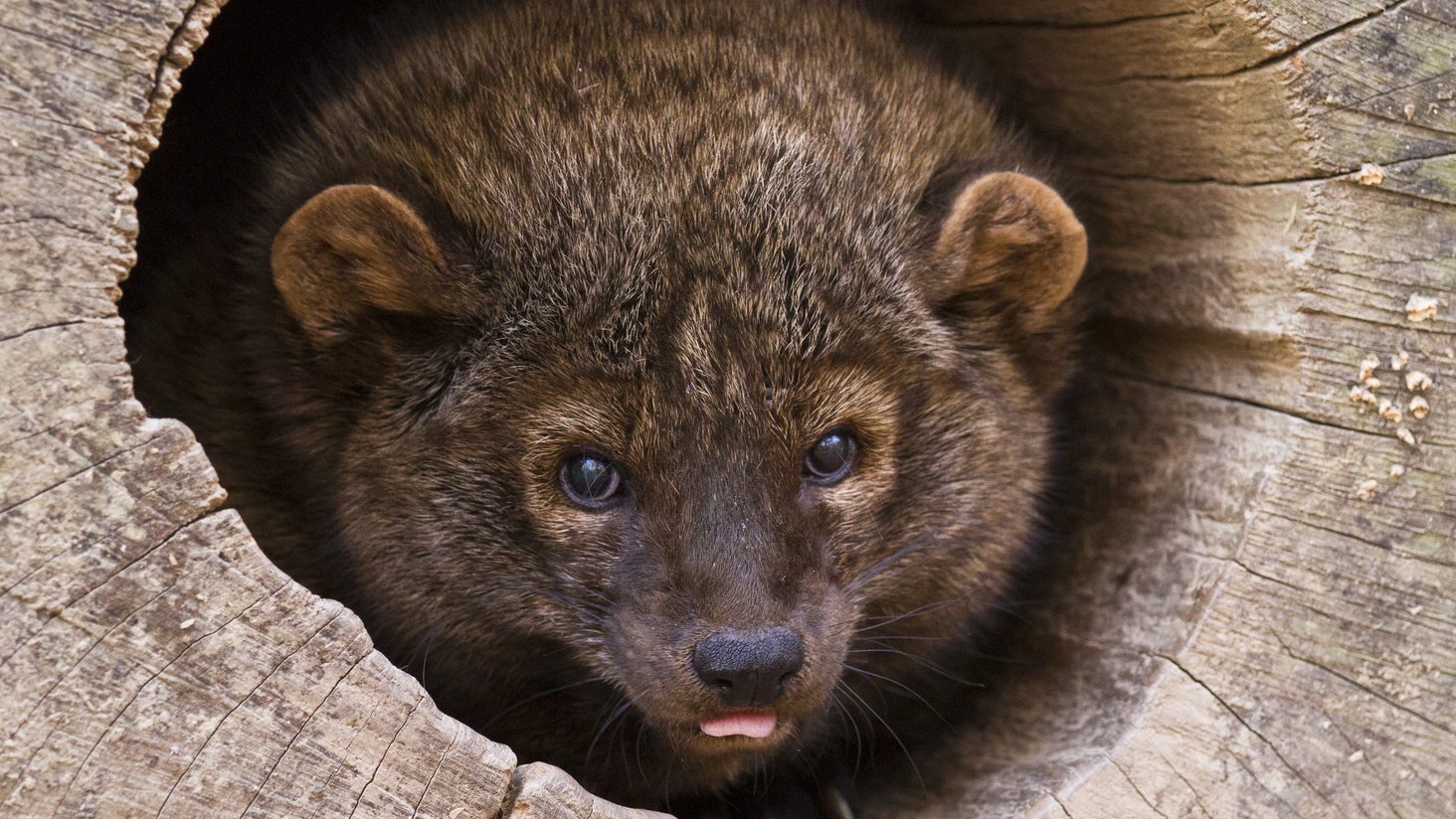
The fisher is a forest-dwelling creature whose range covers much of the boreal forest in Canada to the northern fringes of the United States. © Kent Mason Reading wildlife books as a kid, I learned about the fisher: They’re large furry weasels that hunt in trees. They can flip over porcupines and attack their unprotected tummies. And they need expansive wilderness to survive.
That last one turned out to be somewhat wrong. Fishers survive just fine in smaller forests, provided they are not over-trapped. They were reintroduced in my home state of Pennsylvania in the mid-1990s, and have thrived, as they have throughout much of the Northeast United States.
Where to See One: Fishers are a difficult animal to see on purpose. But they are now found widely in New England, New York, Pennsylvania and other eastern states. They are found in forest areas and even sometimes show up in suburbia. So you never know where one might turn up. But Algonquin National Park in Ontario – particularly in the winter – seems to be the go-to spot for serious mammal enthusiasts.
-
Giant Otter
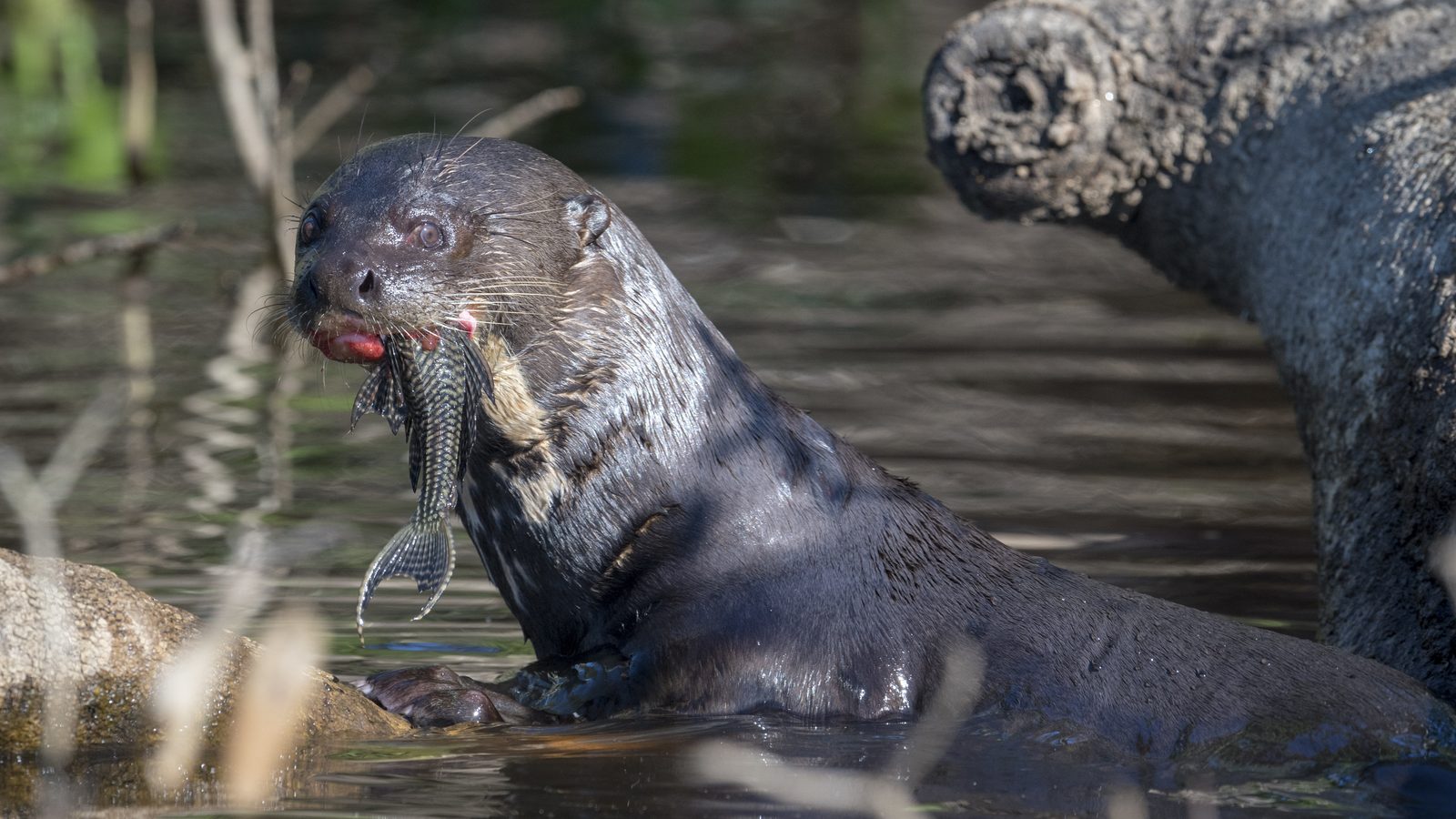
Giant river otter. Pantanal, Brazil, July 2018. © Matthew Scott/TNC Photo Contest 2019 All otters are fun to watch, perhaps none more so than the highly social (yet territorial) giant otter of South America. This species is very cooperative, living and hunting fish in large family groups. They’re also the most vocal of the otters.
Found in freshwater lakes and rivers, they’re sometimes locally known as “water wolves.” Watch them hunting fish as a pack, and it’s easy to see why. Unfortunately, these otters are endangered due to ongoing poaching and habitat destruction.
Where to See: Peru’s Manu National Park and Brazil’s Pantanal region offer excellent opportunities to observe giant otters on oxbow lakes and rivers.
-
Pine Marten
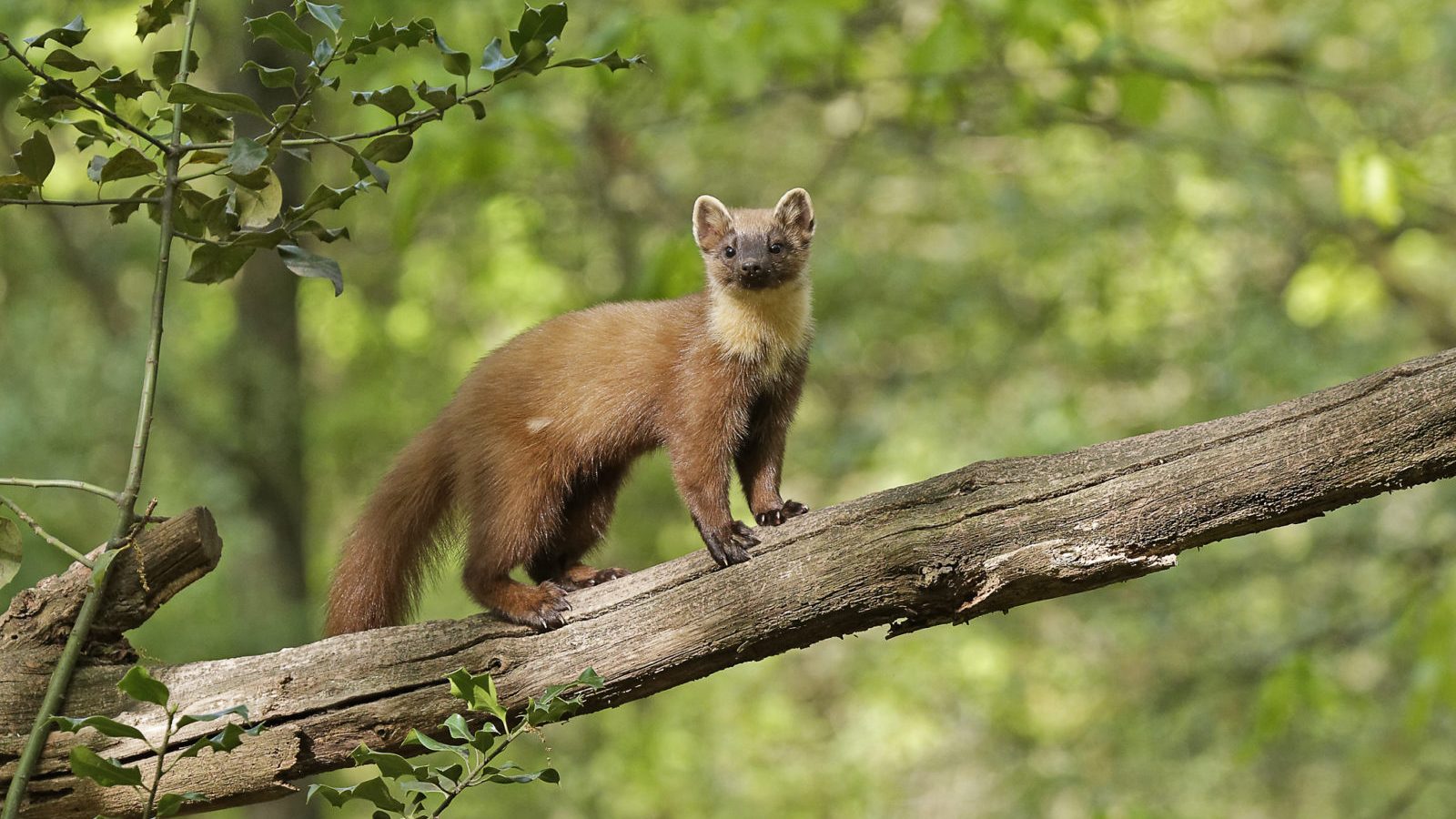
European pine marten © Zweer de Bruin/Flickr under a creative commons license Pine martens declined precipitously in Great Britain in the 19th century due to persecution by gamekeepers; they did not achieve full legal protection until 1988. By that time, its British range was largely confined to the Scottish Highlands.
As the predator has rebounded, it has brought a welcome side benefit: control of invasive gray squirrels. These squirrels, introduced from North America, have eliminated the native red squirrel in many parts of the United Kingdom. Red squirrels have evolved to evade pine martens. Gray squirrels have not. As martens move in, research shows gray squirrels decline, hopefully providing a better future for other native species.
Where to See: There are well-advertised wildlife viewing hides around Scotland that allow close-up views of pine martens (as well as another mustelid, the European badger). Cairngorms National Park and surrounds is particularly well known for marten viewing. On a recent trip, my selected marten viewing hide burned down days before my arrival. But I still saw two pine martens just walking in the forest.
-
Marbled Polecat
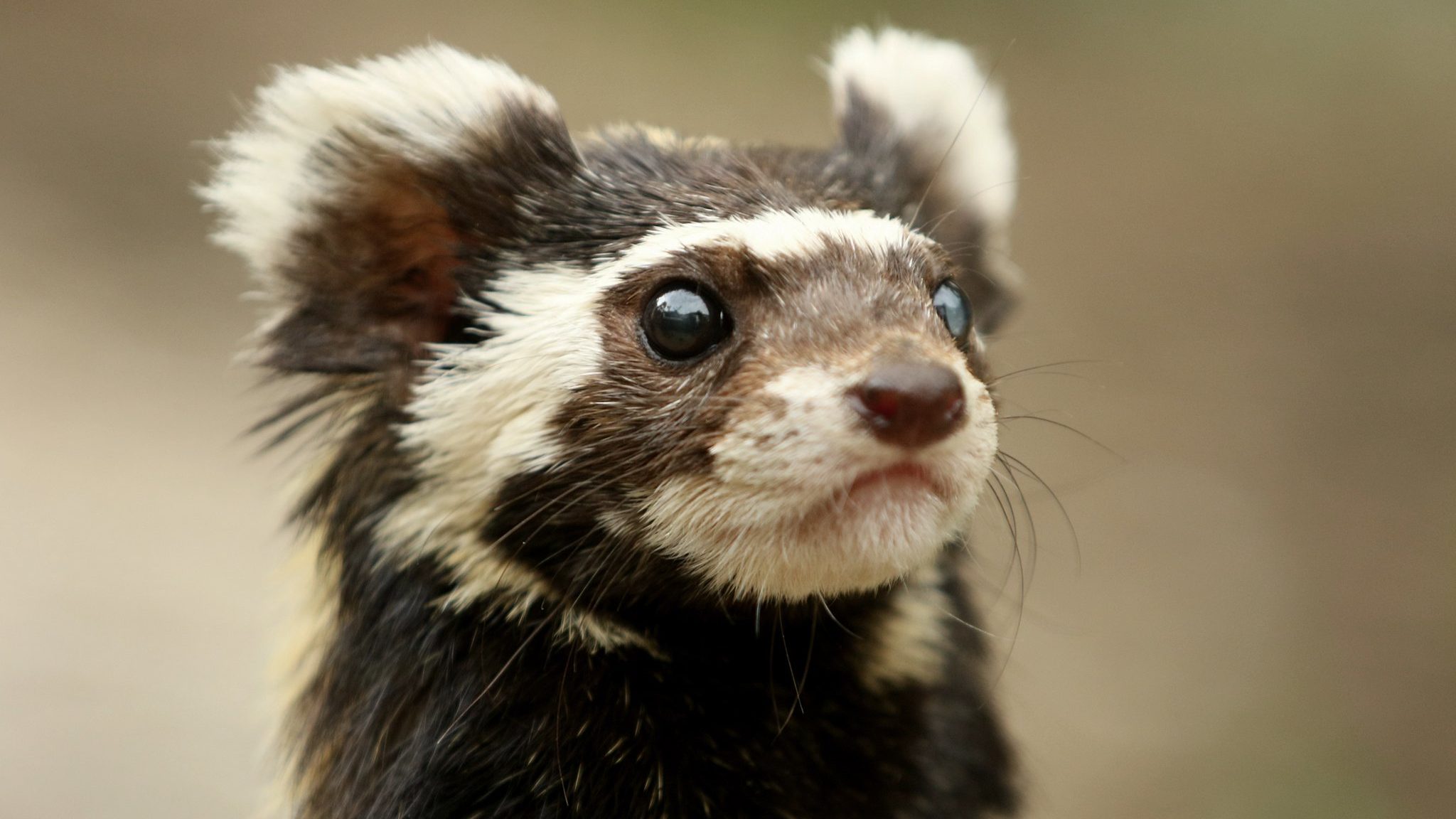
Marbled polecat © ZooFanatic/Flickr under a creative commons license This may be the most beautiful of the mustelids, with striking color and spotting patterns. They look like an animal you want to give a pet, but please refrain. If threatened, the marbled polecat puffs up – and its coloration patterns become even more dramatic. It then completes the display by emitting a vile-smelling musk from its anal glands.
There are numerous anecdotal accounts that shopkeepers in Kabul, Afghanistan, used to keep marbled polecats around to control rodents, but the stench apparently made this a cure worse than the disease. Most mustelids have a musky odor, but species like ferrets are popular pets.
Where to See: Marbled polecats are widely distributed from eastern Europe to western China, but seem most common in the steppe and aridlands of Central Asia. But they’re not easy to find. Mammal watching master Jon Hall spotted one in Mongolia, and other enthusiasts occasionally report sightings on the Mammal Watching forum.
-
American Mink

American mink © Jeff M. Bryant/Flickr under a creative commons license Mink are widely found along rivers and streams in North America. They hunt fish, crayfish and frogs and you can sometimes follow along as they hunt. American mink were also brought to Europe for the fur trade, which is always a bad idea. Some escaped and some were released when fur markets tanked. And then animal rightists “liberated” many more minks, perhaps saving the American minks from their fates but killing off European minks, water voles and other native species in the process.
Mustelids are great in their native habitats but a nightmare when introduced.
Where to See: I have had many encounters while fishing quietly in trout streams across the United States. Any of the “destination streams” will have mink. I have even seen a few catch trout, obviously much better at the game than I am.
-
Black-Footed Ferret
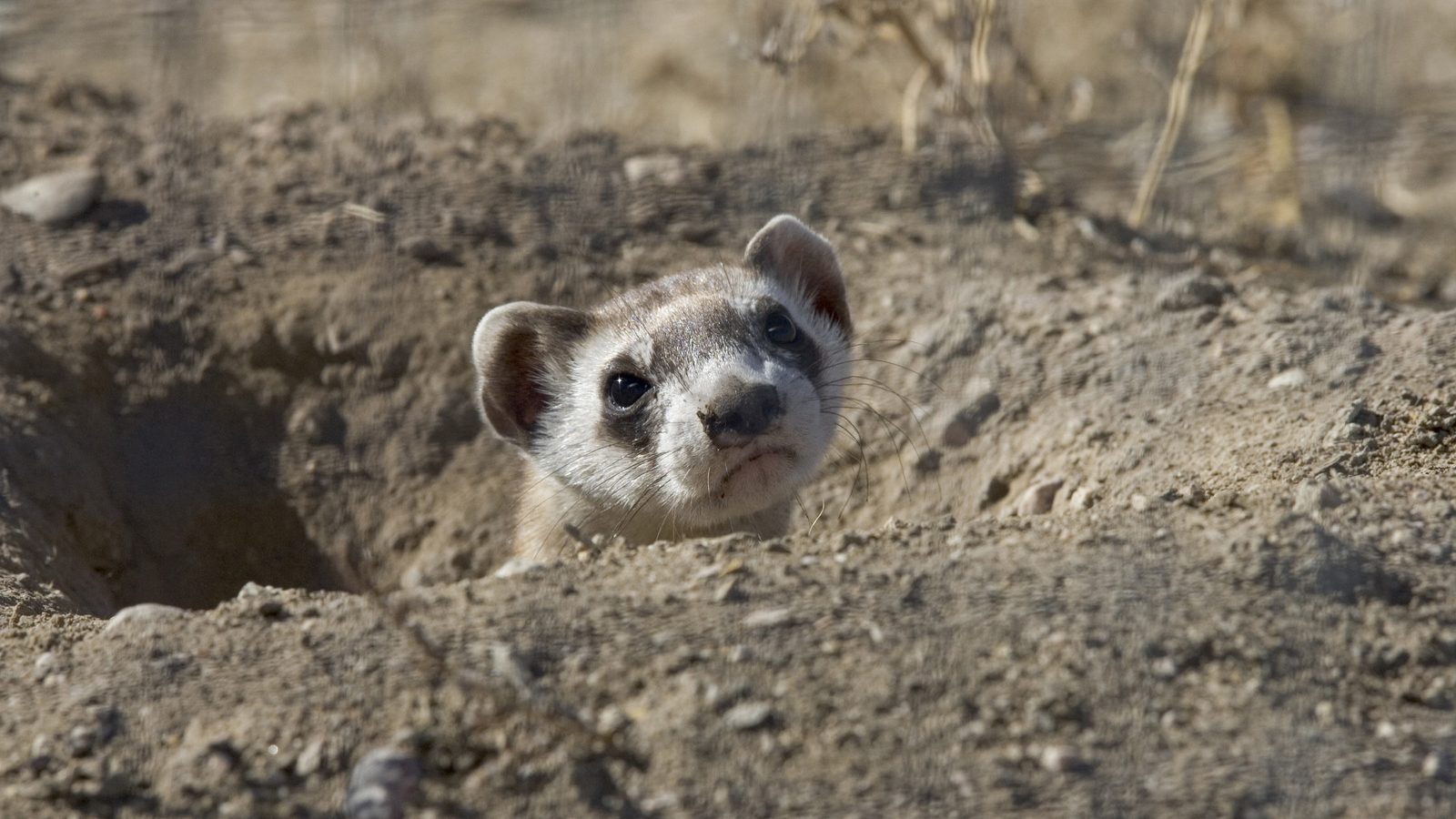
Black-Footed Ferret. © USFWS And finally, the mustelid that came back from the dead. Declared extinct, the black-footed ferret was “rediscovered” by a ranch dog that killed one and brought it home. This set off a conservation and captive breeding effort that was filled with setbacks and controversy. Even many ardent conservationists believed that removing the remaining ferrets from the wild and breeding them was a fool’s errand.
Instead, it became one of the great wildlife recoveries. Yes, black-footed ferrets are still rare, but they are continuing to be reintroduced to new sites. And if there are prairie dogs, they survive and prosper.
Where to See: Likely the most accessible black-footed ferret viewing is near Seligman, Arizona, along famed Route 66. I saw three by spotlighting with mammal watching master Jon Hall. The Arizona Game and Fish Department also offers regular citizen science opportunities to spotlight and even live trap ferrets, certainly a bucket list opportunity for mustelid maniacs.
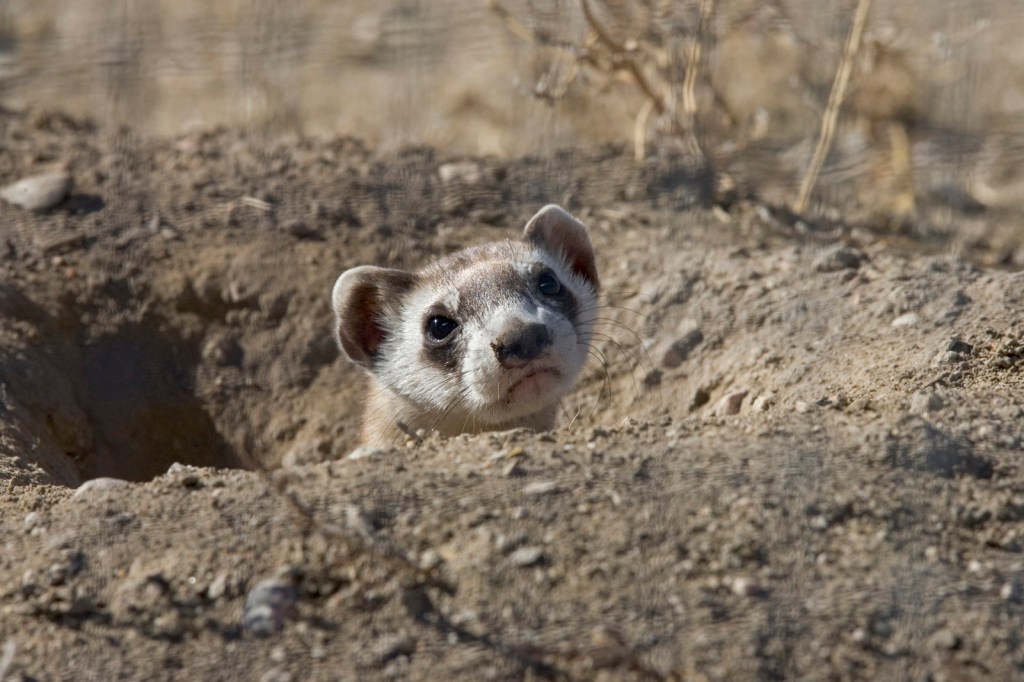



Have you ever witnessed a confrontation between a weasel family member and a much larger animal, like the incredible encounter described with the mink and Canada goose gosling? What other fascinating interactions have you observed in the wild involving these small but feisty creatures? Share your stories and experiences with us!
Hi Matt, This is Cheryl from PSU (back in the day). Imagine my surprise to see your tagline while perusing Mustelid articles. My husband and I have mustelids as a passion and just may take some of those trips you note above. We’ll be in Alaska next summer, visiting a wildlife refuge where we’ll get to see a wolverine, fisher, marten, weasels and mink; of course, we also hope to see otters as well. My best to Jen! Thanks for the info!
Hi Cheryl,
Good to hear from you and thanks for your comment. That is great that you are mustelid fans! I highlight recommend the web site Mammal Watching (mammalwatching.com) for tips on finding mustelids (and just about any other mammal) around the globe.
Also, fishers are becoming increasingly common in Pennsylvania, especially in the northcentral forests. A colleague there has captured numerous images on trail cameras, and has seen them in the forest. I also have had good luck mink spotting in PA along any trout streams, notably Spring Creek (near State College), Penns Creek and Yellow Breeches.
Thanks again for writing!
Best,
Matt
Wow, what a great article, and 2 species I’d never heard of, thanks! I got to watch a mink attempt to grab a Canada goose gosling- this was incredible to watch because the gosling was half grown and accompanied by its parents- 20 lbs of protective fury. Even my trained goose herding dogs won’t tangle with one, but this little brawler actually hopped on its hind legs to appear larger, challenging the adults to get close enough to grab the young. It’s one of the coolest things I’ve ever witnessed.
I have seen 2 Fischer’s and a mink! I live in the Adirondack Mountains! The Fischer’s are scary looking creatures! The mink crossed in front of us , he was filled with joy, carrying a snake in his mouth.
We also have seen many otters in our local lakes.
Wonderful article, Matt. But I would like to give a shout-out to skunks too. My favorite Mustelid moment took place several years ago in downtown New Haven, CT. I stepped off my porch one summer night and found myself facing a magnificent, imperturbable Striped skunk, a mere 4 feet away. After a long moment, I headed out the front gate on my intended walk, and the skunk resumed rooting in my flower garden. It’s not like I was going to stop him! Easily among my top 10 lifetime mammal sightings.